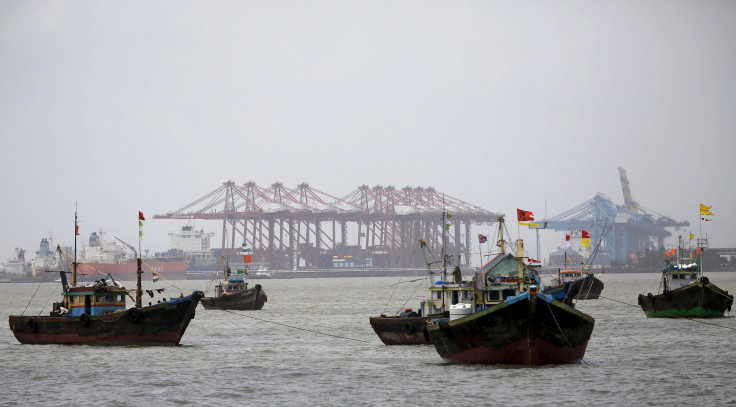India’s Trade Deficit Widens In December, Exports Fall For 13th Straight Month

Exports from India fell for the 13th straight month in December, owing to a global slowdown and a decline in commodity prices, according to official data released Monday. With the decline in exports and a surge in gold imports, India’s trade deficit widened to $11.7 billion in December from $9.8 billion in November.
Cumulative exports in the current fiscal year in the nine months from April to December was $196 billion, a fall of 18 percent from $239 billion worth of goods exported in the same period a year ago, a report from the Ministry of Commerce showed Monday.
“Orders from the U.S. and Europe, India’s two largest customers have dried up,” S.C. Ralhan, president of the Federation of Indian Export Organisations, told local news network IBNLive. “The slowdown in China and depreciation of its currency has further hit exports," Ralhan said, adding that total merchandise exports could fall to about $250 billion in the fiscal year ending March 31.
While exports have hovered around the $300 billion mark in Asia’s third-largest economy for the last three years, Ralhan noted in a November report that “going by the current trend and factoring little improvement, reaching $300 billion in the current fiscal looks a remote possibility.”
Besides, owing to a sharp devaluation of the Chinese yuan since August last year, China’s exports have become cheaper, affecting Indian engineering goods, which account for about a quarter of the country's total merchandise exports.
A trade deficit is an economic condition where a country imports more goods than it exports, with deficit equal to the difference between the net worth of imports and exports.
Gold imports almost tripled — rising 179 percent to $3.8 billion in December — partly due to the ongoing Indian wedding season, which typically runs until March. Lower gold prices also helped push imports in the world's second-largest gold importer after China.
"Despite the negative surprise on the trade deficit, we think India’s underlying external position remains strong," Barclays economists Siddhartha Sanyal and Rahul Bajoria wrote, in a report cited by Bloomberg.
Indian Prime Minister Narendra Modi has sought to increase employment and attract foreign investment into manufacturing businesses through his “Make in India” initiative, a centerpiece of his economic recovery plan. Modi also launched Saturday a 100 billion rupee ($1.5 billion) fund and a three-year tax break among a slew of measures to encourage the country’s entrepreneurs as part of the "Start-up India" program.
In November, the government announced a $400 million credit program so as to marginally help subsidize exports in the coming months. However, with pressure mounting on Finance Minister Arun Jaitley to cap India’s widening fiscal deficit, there may be little scope to provide relief to exporters when he presents the annual budget on Feb. 29, according to local media reports.
© Copyright IBTimes 2024. All rights reserved.





















